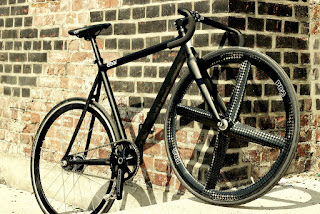As cycling has become an increasingly popular form of exercise, many people have questioned whether or not it can help to increase the size of the butt. After all, we often hear about the benefits of cycling for building strong legs, but is it possible that it could also lead to a larger buttocks area? aka cyclist butt
To answer this question, it's important to understand a bit about how the body responds to exercise. When we engage in any physical activity, our muscles are subjected to stress and strain. In response to this stress, the muscles undergo a process of adaptation, which involves the breakdown and rebuilding of muscle fibers. This process, known as muscle hypertrophy, can lead to an increase in muscle size and strength.
So, does cycling lead to muscle hypertrophy in the buttocks area? The short answer is that it depends on the intensity and duration of the cycling workouts, as well as the individual's genetics and diet.
Some research suggests that cycling can indeed lead to muscle hypertrophy in the lower body, including the buttocks. For example, a study published in the Journal of Sports Medicine and Physical Fitness found that cycling was effective at increasing quadriceps and gluteal muscle size in trained male athletes.

